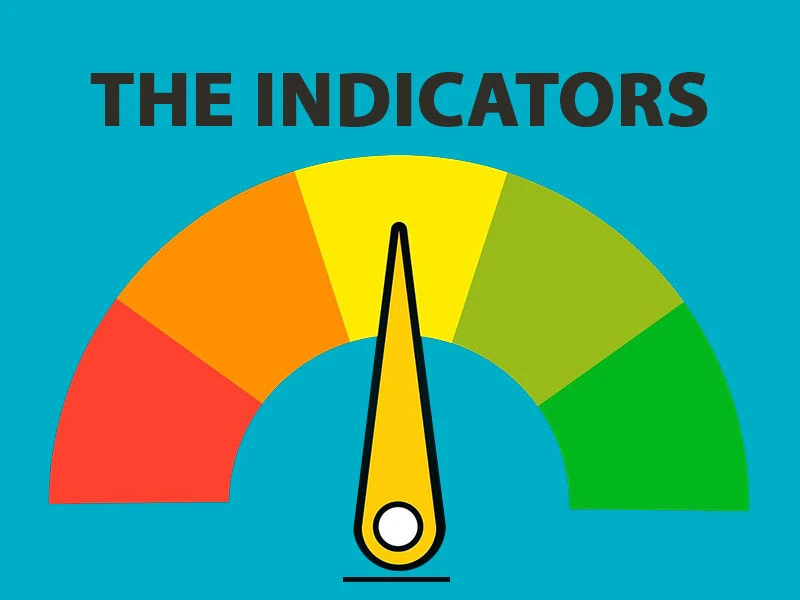Fundamental Analysis and How it Can Help Your Investment Strategy

Fundamental analysis serves as the cornerstone of investment decision-making, offering a comprehensive approach to evaluating a security's intrinsic value. It involves assessing the underlying factors that could influence a company or asset's financial health and future prospects. By scrutinizing various qualitative and quantitative factors, fundamental analysis aims to determine the true worth of an investment.
Why fundamental analysis essential in investment?
Fundamental analysis plays a pivotal role in shaping robust investment strategies. Unlike short-term fluctuations or market sentiments, it focuses on the fundamental aspects of an investment, providing a deeper understanding of the asset's potential for long-term growth and profitability.
Incorporating fundamental analysis into investment strategies empowers investors to make informed decisions, mitigate risks, and increase the likelihood of achieving sustainable returns.
Analyzing Financial Statements

1. Balance Sheet Analysis
Analyzing a company's balance sheet involves assessing its assets, liabilities, and equity to gauge its financial stability and health. This evaluation includes examining the liquidity of assets, understanding debt structures, and interpreting changes in equity over time.
Focusing on the proportion of liquid assets, the balance between short-term and long-term liabilities, and the relationship between equity and debt aids in understanding a company's ability to meet obligations and sustain growth.
Trends such as consistent asset growth, a manageable debt-to-equity ratio, and a healthy mix of liquid assets often signal financial stability, providing valuable insights for investment decisions alongside industry comparisons and economic factors.
2. Income Statement Analysis
Income statement analysis comprehensively examines a company's revenue, expenses, and profitability over a specific period. It provides essential insights into the business's core operational performance and financial viability.
By scrutinizing revenue streams, analysts understand the sources and consistency of income generation, assessing the stability and diversity of the company's earnings. Analyzing cost structures and trends within expenses allows for insights into operational efficiency and potential areas for improvement.
Moreover, profitability metrics derived from the income statement, such as net income and margins, serve as crucial indicators of the company's ability to generate profits and manage costs effectively.
A thorough examination of the income statement helps investors gauge the company's operational health and capacity to generate sustainable earnings, aiding in informed investment decisions.
3. Cash Flow Statement Analysis
Cash flow statement analysis is instrumental in evaluating a company's financial health by providing a detailed account of the cash inflows and outflows during a specific period. It delineates the sources and uses of cash, categorized into operating, investing, and financing activities.
Assessing operating activities reflects the cash generated or used in day-to-day business operations, indicating the company's ability to create some money from its core activities. Analyzing investing activities reveals the company's capital expenditures, acquisitions, or divestitures, shedding light on its strategic investments.
Furthermore, understanding financing activities highlights cash flow from debt issuance, repayment, or equity financing, indicating how the company finances its operations and expansion. By scrutinizing these segments, investors gain valuable insights into the company's cash management, liquidity, and ability to sustain operations, facilitating informed investment decisions.
Evaluating Economic Indicators

When making smart investment choices, keeping an eye on specific economic indicators is like having a secret map to understand where things are heading.
First, GDP is the grand total of all goods and services a country produces. Yep, it's like the big picture of a country's financial health.
Then, there are Interest Rates. These little numbers might seem tedious, but they're crucial! They affect everything from how much you pay for loans to how businesses grow.
Finally, let's talk about Inflation, which is the gradual rise of prices over time. It might sound like a sneaky villain, but understanding inflation helps you see how your money's value changes. By keeping tabs on these indicators, you're peeking into the economy's future and making more brilliant moves with your investments!
Fundamental Analysis Tools and Techniques
Ratio Analysis:
-
Profitability Ratios: These ratios are like your investment scorecards, showing how well a company turns money into profits. For instance, the 'Return on Investment' (ROI) ratio measures how much profit a company makes compared to its overall investments.
Formula for calculation of ROI = (Net Income / Total Investment) * 100 - Profit Margin Ratio: showing how much profit a company pockets out of each sale. Formula for calculation of Profit Margin = (Net Income / Revenue) * 100
-
Liquidity Ratios: Think of these ratios as your emergency fund check for a company. They reveal if a business can pay its short-term bills without sweat. The 'current ratio' is one of them; it compares a company's current assets (like cash or inventory) to its current liabilities (bills due soon). If the ratio's high, it's like having plenty in the bank to cover those bills. It's all about making sure a company doesn't drown in debts due right away.
Formula for calculation of Current Ratio: Current Assets / Current Liabilities -
Debt Ratios: These ratios indicate how much a company depends on borrowed money. For example, the 'Debt-to-Equity' ratio compares a company's debts to its own invested money. It's like looking at how much they owe compared to what they own. Too much debt might be risky - it's like juggling too many loans. But if it's balanced right, it shows how well a company manages its debts without risking its financial health. These ratios help you see if a company's playing it safe or taking significant risks with borrowed cash.
Formulas:
Debt-to-Equity Ratio = Total Debt / Shareholders' Equity.
Debt Ratio = Total Debt / Total Assets
These ratios are like checking the pulse of a business - they tell you how healthy its profits are and if it's using its resources wisely.
Valuation Method
- Discounted Cash Flow (DCF) Analysis: Imagine predicting a future value by considering how much money it could make in the long run. That's what DCF does! It estimates the future cash a business might bring in and then figures out its current value by considering the time value of money. It's like asking, "How much is all that future cash worth right now?"
- Price-to-Earnings (P/E) Ratio: This one compares the price tag of a company to its earnings; it's somewhat akin to determining how many dollars investors are ready to shell out for each dollar of a company's profit. A high P/E might mean investors expect big things, while a low one could signal the opposite. It's a handy way to see if a company's stock is pricey or a bargain compared to its earnings.
- Dividend Discount Model (DDM): Imagine a company paying you dividends for owning its stock. The DDM method estimates the value of that stock by looking at the dividends it might pay in the future. It's like predicting the value of a tree by counting the fruit it could bear. This model helps investors determine a stock's worth based on expected future dividends.
Identifying Strong Fundamentals in Companies

Leadership and Vision
Great leaders steer the ship in the right direction. Assessing leadership means looking at how well the company's top brass leads and plans for the future. It's like checking if they have a clear map and the skills to navigate the company toward success.
Corporate Governance
Corporate governance means the rules and ways that companies are managed and controlled. Good governance ensures fairness, transparency, and accountability in decision-making. It's like ensuring everyone's playing by the rules and looking out for the company's and its stakeholders' best interests.
SWOT Analysis
Picture this as a company's superhero guide - it stands for strengths, weaknesses, opportunities, and threats. It's all about knowing what the company's good at, where it needs improvement, spotting growth opportunities, and being aware of potential risks. It's like looking at the company from every angle to plan for success and dodge trouble.
Industry Positioning
Think of this as a company's spot in the business playground. Analyzing industry positioning is like seeing where a company stands among its competitors. Is it a trailblazer, a follower, or somewhere in between? Understanding this helps see if a company has a winning strategy to stay ahead. It's all about knowing the company's place in the big business world and how it plans to stand out.
Market Capitalization
Market capitalization, often called "market cap", is like the price tag of a company in the stock market. It's calculated by multiplying the total number of outstanding shares by the current stock price. This number represents the total value of a company according to the stock market. A higher market cap indicates a larger, more established company, while a lower one may signify a smaller or newer company. Investors often use market cap to gauge a company's size and relative value compared to others in the market.
Growth Rate of a Company
The growth rate of a company is like its speedometer; it shows how fast it's expanding. This rate usually refers to the annual increase in revenue, earnings, or other metrics over a specific period. A higher growth rate suggests that a company is expanding its business, selling more products, or earning more money.
It's like measuring how much a company stretches and grows its potential for future success. Investors often pay attention to growth rates as they indicate the potential for higher returns in the future. However, it's crucial to consider sustainable growth, as extremely high growth rates might not always be feasible in the long term.
Conclusion
Investing smartly isn't about luck but having the right tools. And that's where fundamental analysis steps in! By diving into the nitty-gritty of a company's health and potential, fundamental analysis helps you make informed investment choices.
Remember, it's not just about following the latest trend or doing what everyone else is doing; it's about understanding the fundamental aspects that drive a company's success. So, remember the power of fundamental analysis, whether you're eyeing a stock or pondering over investment options. It's like having a supercharged compass guiding you toward better investment decisions - one that looks beyond the surface and helps you build a more robust, successful investment strategy for the long run.








